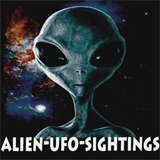
UFO Encounters Sightings, Visitations, And Investigations
Flying saucers, better known as unidentified flying objects or UFOs: Some people believe in their existence without question. The skepticism of others knows no bounds, and in fact the skeptics find much to ridicule in the world of ufology.
But the world is full of strange and eerie phe-nomena. To paraphrase Dr. J. Allen Hynek: Is ridicule the best approach to the phenomenon of UFOs? The scientific community has a duty and responsibility to give serious scientific examina-tion to reports of UFO sightings. The first step toward an understanding of UFOs is to study the stories and photographs of those who have had some sort of contact with these phenomena.
UFO Encounters presents the stories and case histories of individuals who claim to have seen or come in contact with UFOs. Some stories are patently false, while others are told by reputable people with supporting evidence. The many photographs presented were taken by people who saw UFOs. Again, some are obviously hoaxes, but other pictures continue to defy conventional explanation, even decades after the photograph was taken.
The first chapter, “In the Beginning,” gives a quick overview of UFO history before Kenneth Arnold’s sighting in 1947. The second chapter, “UFOs: The Official Story,” presents the official position of the United States government, which attempts to explain all UFO reports in terms of conventional phenomena.
Chapter 3, “The Dimensions of a Phenomenon,” explores the many ways UFOs have made their presence known on Earth: nocturnal lights, daylight discs, radar/visual detection, and close encounters of the first, second, and third kind. Of course, UFOs provide fertile ground for hoaxes and scams of all sorts, and the fourth chapter, “Into the Wild Blue,” details the fringe elements of ufology.
Finally, the last chapter, “The Ultimate Secret,” looks into the slow, painstaking unray-eling of the most significant episode in ufology, the Roswell incident.
Many possible explanations are offered for UFOs: natural phenomena, psychic visions, and, of course, visits by extraterrestrial beings. The idea of other life forms somewhere in the uni-verse stirs up enormous controversy.
But such respected astronomers as Carl Sagan and Clyde Tombaugh believe there are thousands of habit-able planets in the galaxy, any number of which could support an advanced civilization.
So, turn these pages with an open mind and come explore the phenomenon of UFOs.
